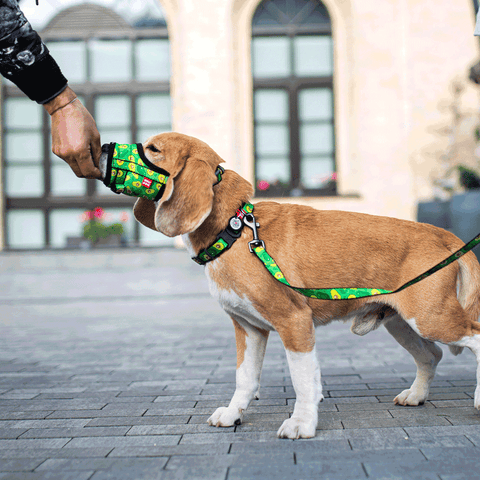Commands to teach your dog
Most dogs are not naturally obedient, so you need to teach them to respond to commands. Some basic commands to teach your dog include 'sit', 'stay', and 'come'. The easiest way to teach them is with the help of positive reinforcement.
Commands To Teach Your Dog
Dog training commands are one of the most important things you can teach your new pet. Without proper training, your dog will not respect you as his leader, may develop bad habits, and could even become a danger to you and others. This is especially true for breeds that are considered ‘dangerous’, like a pitbull for example. It’s also important to learn some commands to teach a puppy.
To teach your dog obedience you need to be patient, calm, and consistent. Make sure you have a pocketful of treats because learning these commands will involve plenty of positive reinforcement!
When training your dog, always make sure that both you and your dog are in a relaxed environment. Your dog should not be too hungry or tired as this will make it difficult for them to focus on what you’re trying to teach.
You should also be familiar with the commands to teach your dog to learn before starting the training session. If you’re unsure of how to use a particular command, ask for help from an expert or do more research online.
There are many different commands that you can teach your dog. Some are more basic than others, but all of them are important to the development of your pet. Read on to learn some of the best dog training commands that every canine should know.



A couple of very Basic Dog Commands to start with
Do you want to train your pup but do not know where to start? These are the best basic dog commands to teach them:
'Sit' is one of the first commands that usually need to be taught when starting with dog training. The command is used in many other commands such as 'stay' and 'down'. If a dog knows how to sit, then it makes learning new commands much easier. It can be used as a default behavior when you have company over or are in an unfamiliar situation. It’s also useful if you need to restrain your dog while greeting another dog or person.
Teaching a dog to sit is simple. You need to make sure that you have their full attention. You can either use a treat in your hand as a lure or use something they like. Gently pull on the lead until they are sitting with their bottom on the floor. Once they are sitting correctly, praise them and give them a treat as a reward. Repeat this process until they are able to sit without any assistance from you. Once they are able to do this, then it is just a case of practicing these commands whenever possible and rewarding them when they respond correctly.
The second of the commands to teach your dog is ‘down.’ This command is useful for keeping your pet still and calm when guests come over or for letting people walk past without jumping up on them. This command is essential for children who want to play with their dogs in a safe way and for families who have guests over a lot. It teaches your dog to lie down and remain calm even when there is a lot of excitement going on around him.
To teach this command, start by getting your dog in the sitting position using the technique described above, then hold the treat between his paws on the floor and say, “down.” If he lies down, praise him with, “Good boy! Down!” immediately, then give him the treat.
A little more advanced Dog Training Commands to bond with them further
Dog training is a great way to bond with your dog and become closer to them.
Every dog should know the basic commands, or rules, of being a well-behaved canine citizen. These are the same set of commands that professional dog trainers use. They're simple to teach and easy for your dog to learn. And once your dog understands them, you'll have a better relationship with him/her as well as greater control over his/her behavior.
Here are the basic commands you should teach your dog:
Stay: The stay command is important because it teaches your dog to wait until he is released before performing any actions. This teaches him to be patient and disciplined so that he does not perform random actions without being told. Teaching him this command will make him safer around other people because he will not jump up on them or run out into the street when a door is opened.
Come: This command requires some advanced training, so start by getting your dog used to being on a long lead — 20 feet or more — in an open area where there are no distractions. Get him used to the lead first by letting him drag it around the house for a few minutes each day until he ignores it completely. Then put it on him and take him outside while giving lots of praise when he responds correctly to basic commands such as "sit" or "stay." Walk with him on the long lead, praising him every time he walks by your side. When they are ready, make them stay and get as far as the lead permits. Then tell them ‘come,’ and praise them when they do it straight.
What Other Commands To Teach A Puppy?
Puppies are cute and fun, but they can also be a handful. If you've recently introduced a puppy into your home, then you're probably wondering how to teach your new dog commands that will allow you to take back control of the home.
Drop It: This is one of the most important commands to teach a puppy, especially if they love to pick things up or put things in their mouth. The ‘drop it’ command helps you to get your dog to let go of something in their mouth that could be harmful, such as a rock or an electric cord. It’s also useful if your dog likes to rip things apart — came home to find a torn apart couch cushion? You’ll want to be able to use the drop it command on your dog!
Leave It: The leave it command can be used if you want your puppy to ignore something on the ground, like food or other dogs playing at the park. If the object is something that could be dangerous for your dog, like food that’s not good for them or a human medication, this is one of the commands you should work on with your dog right away.
These are excellent commands to teach an older dog as well.

